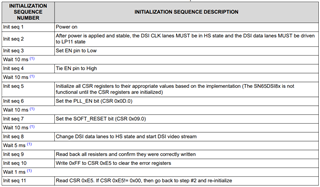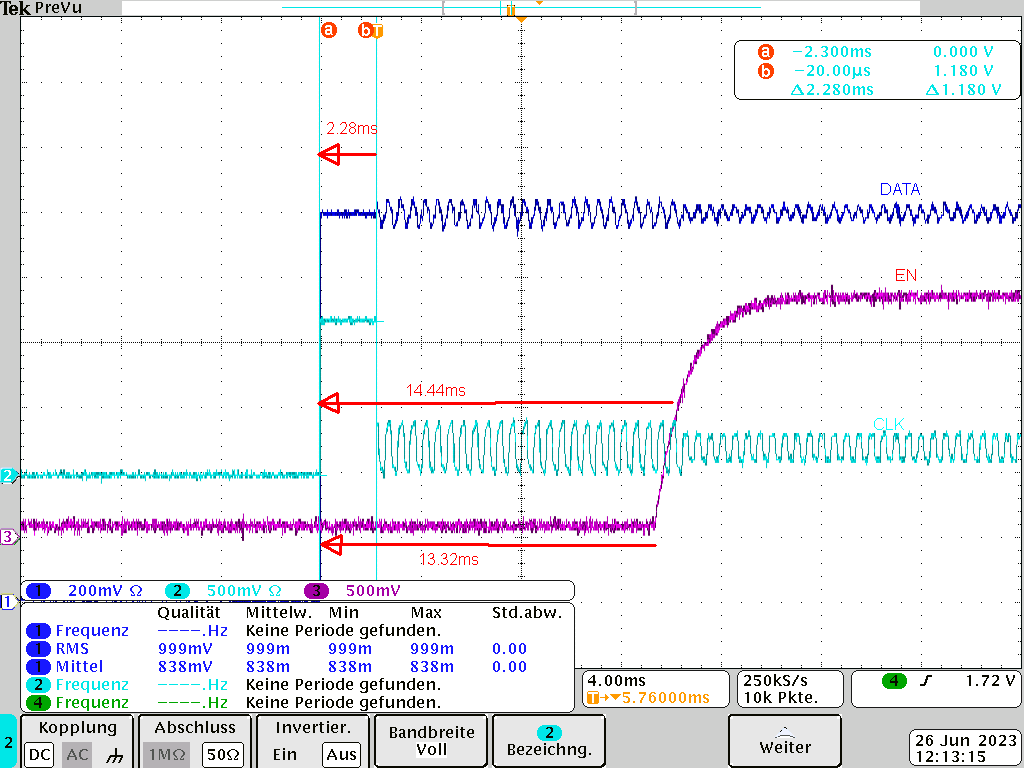Hello everyone,
We are working on a custom i.MX8M-mini Android 11 based device which uses the SN65DSI83 MIPI DSI to LVDS bridge.
In general terms, our device works correctly, however we have noted a very sporadic issue, we need to turn on/off our device screen several times for it to occur. As you can see o the attached f1.png image, when the issue happens the upper half of the screen is corrupted, meanwhile the lower half of the screen remains working correctly.
This issue is normally fixed by locking and unlocking our device screen for the LCD to be reinitialized, but we need to understand the corresponding root cause.
We have tried many display timings on our Linux LCD drivers according to the display datasheet and setting additional delays on the DSI83 driver without success.
We noted that when the issue occurs, if we send a test pattern from the DSI83 (0x3C = 0x10) the glitch is not visible, but when returning to normal video stream (0x3C = 0x00) the screen issue is there again, this make us think that the issue is on the MIPI DSI portion of our i.MX CPU, but we reached you out to see if you could provide us any debugging step from the DSI83 perspective.
Any suggestion will be highly appreciated,
Thanks, and best regards,
Esteban V.



